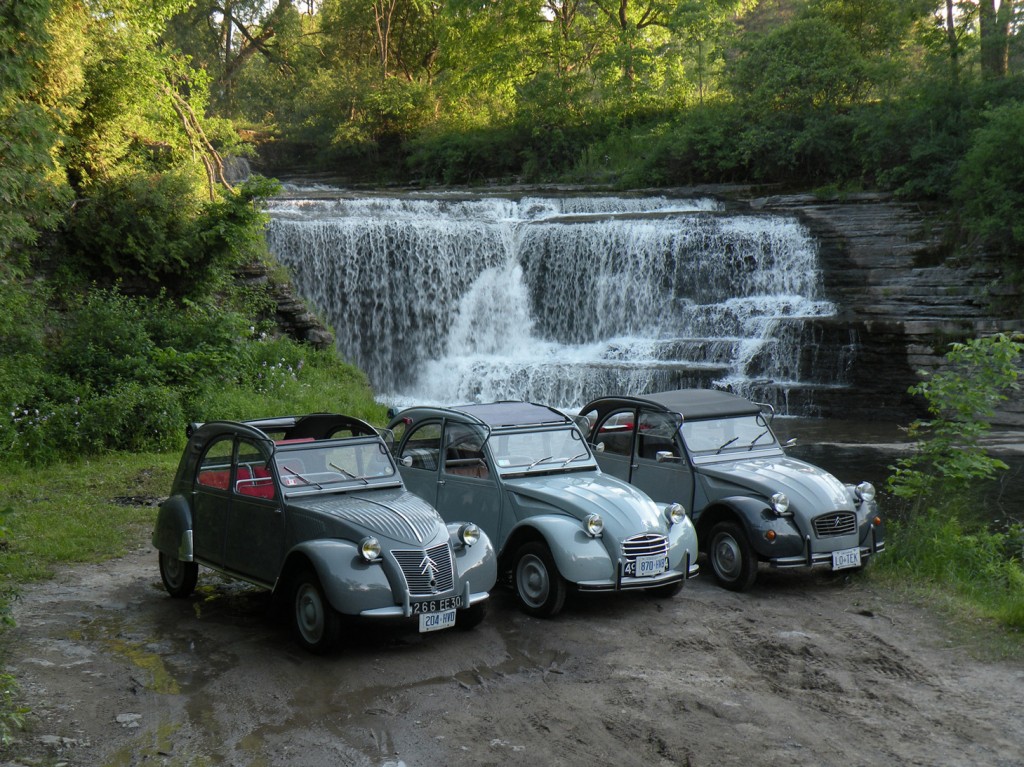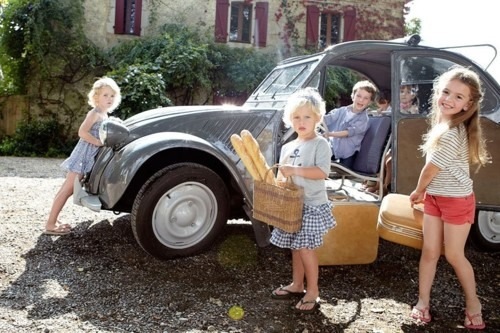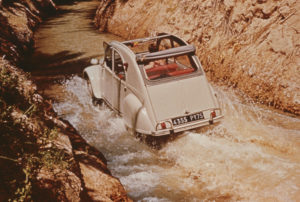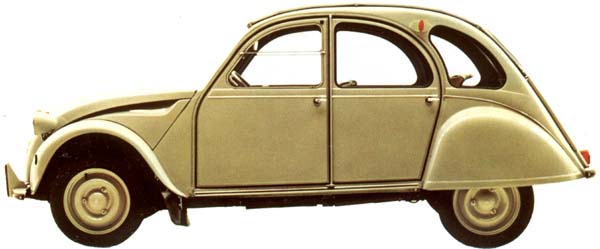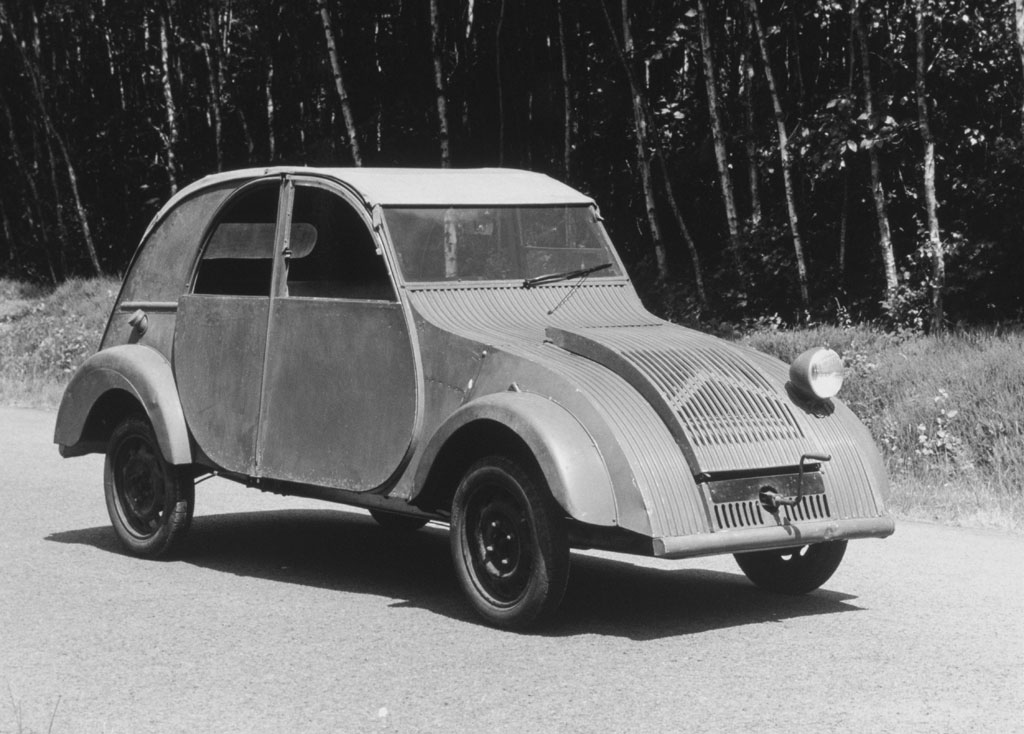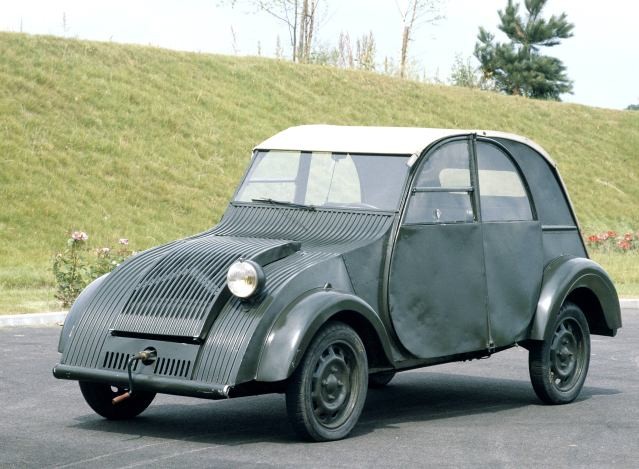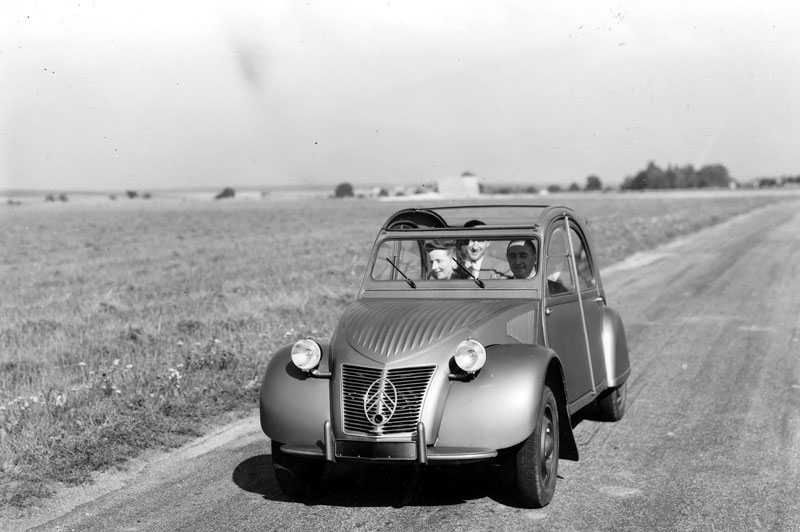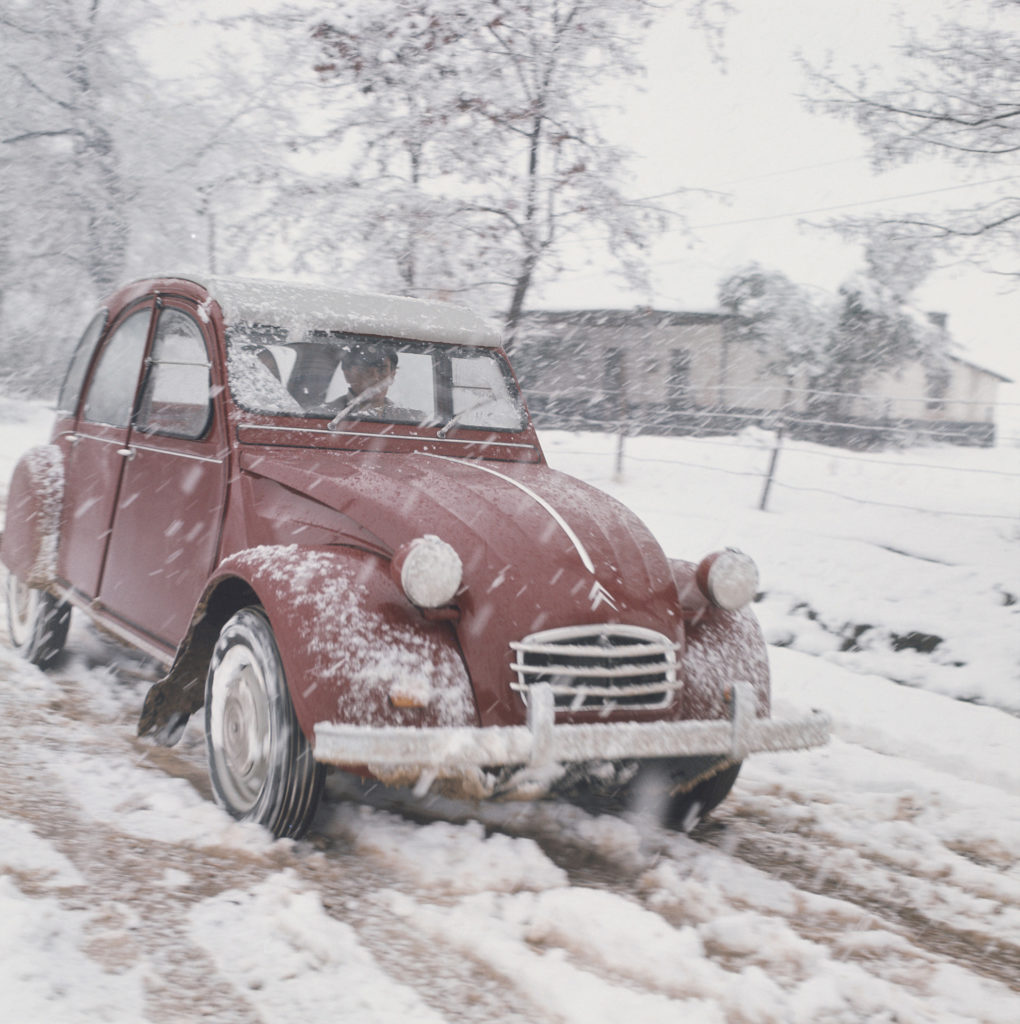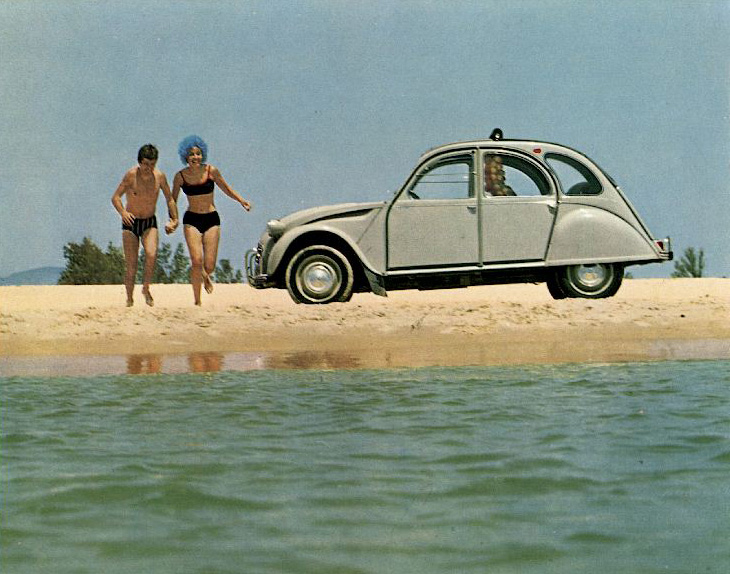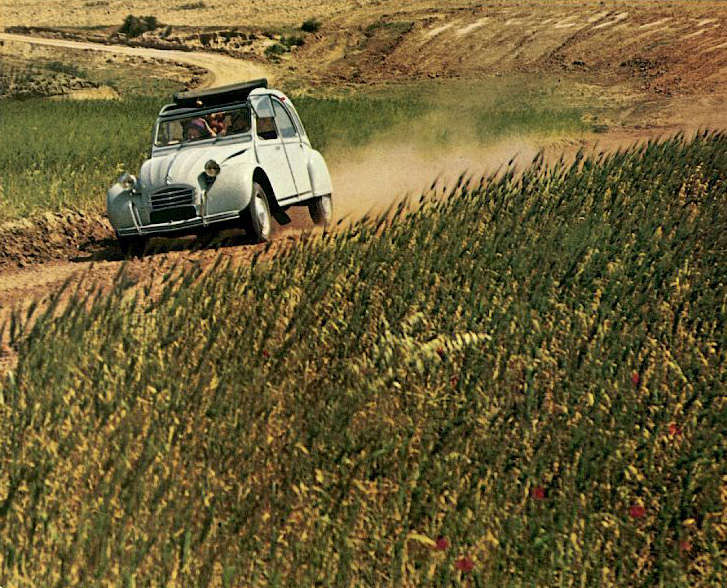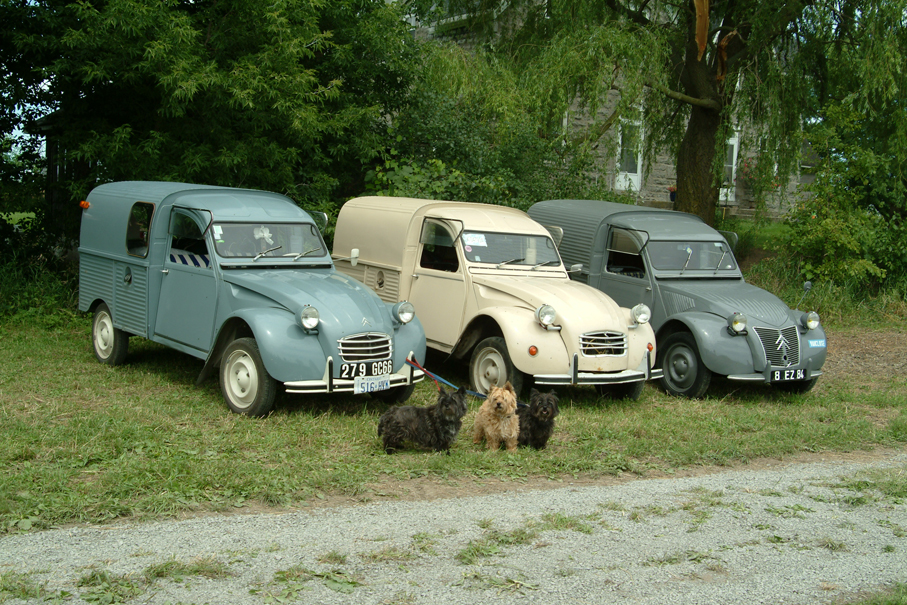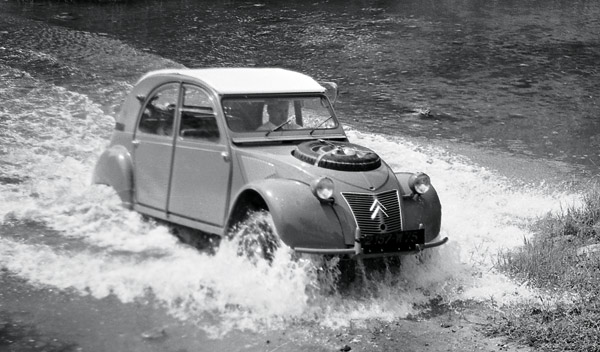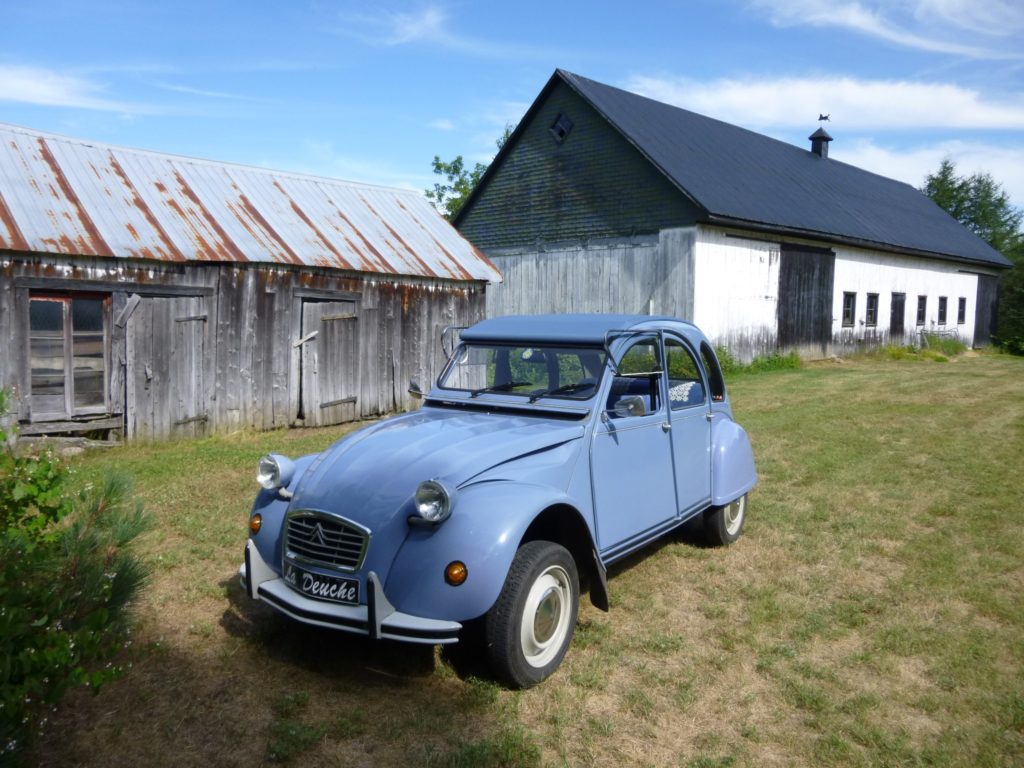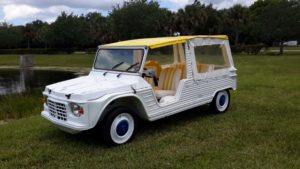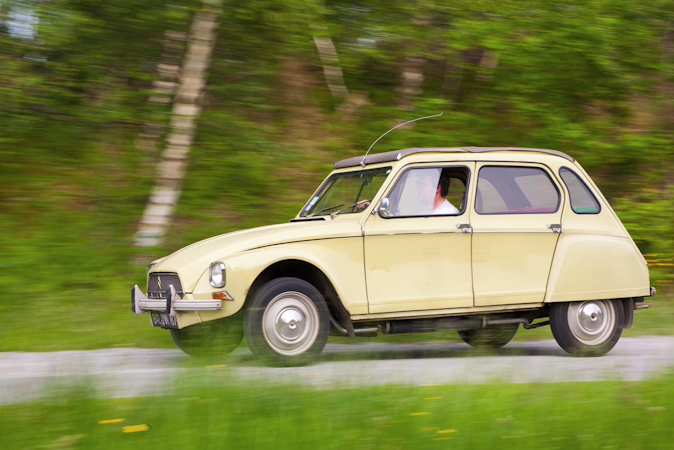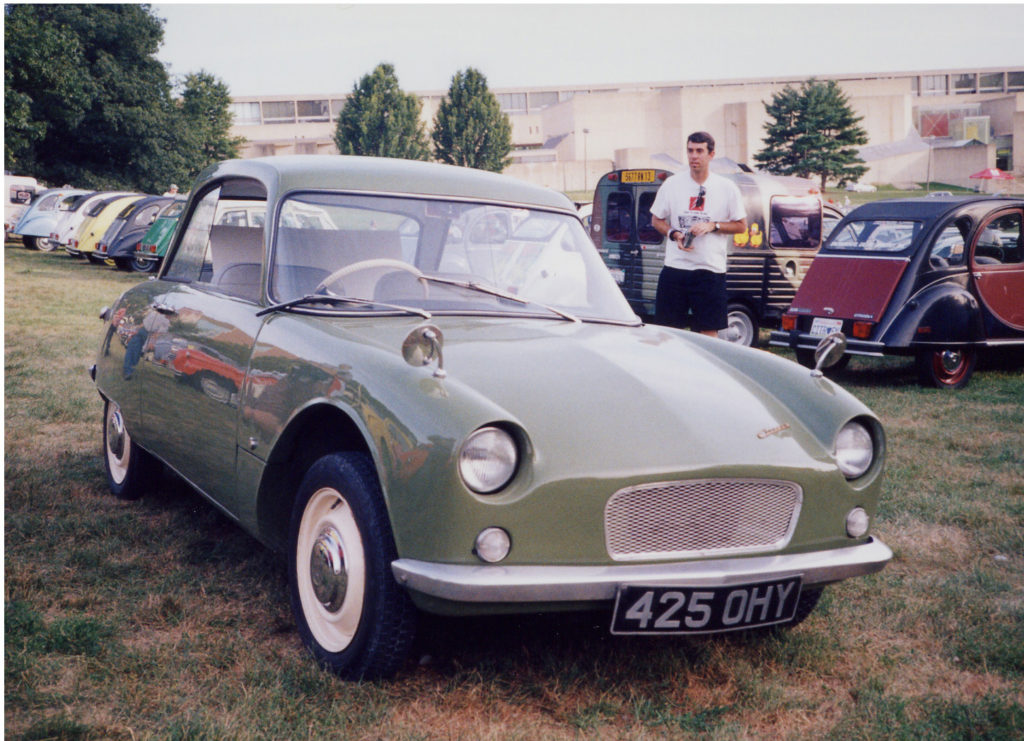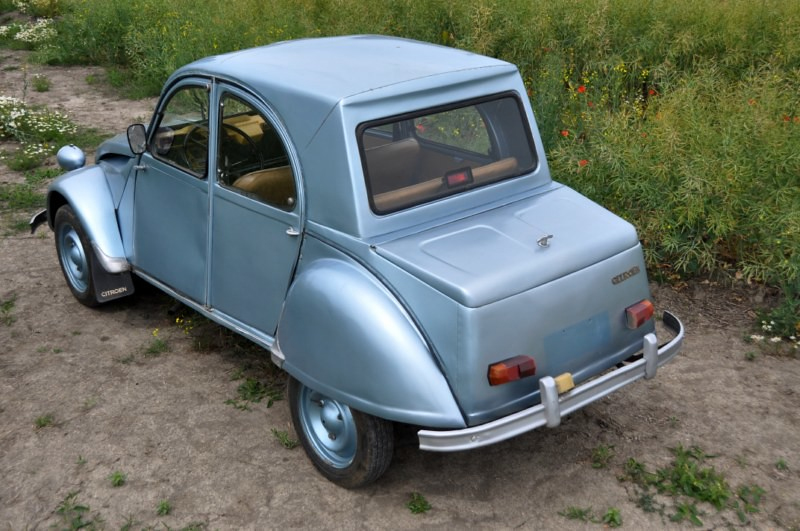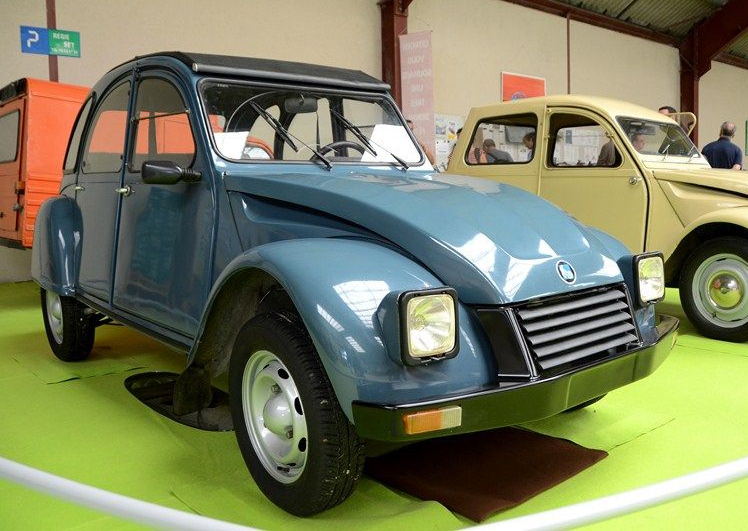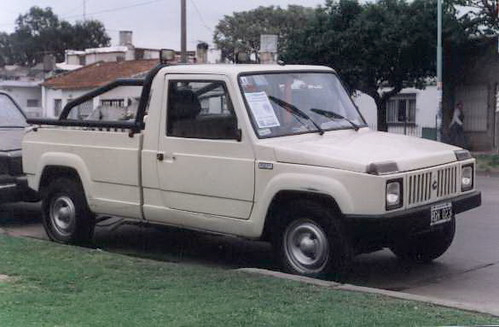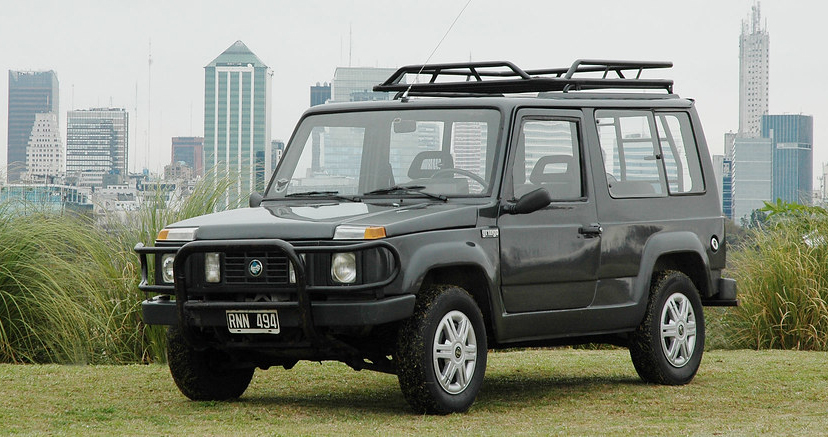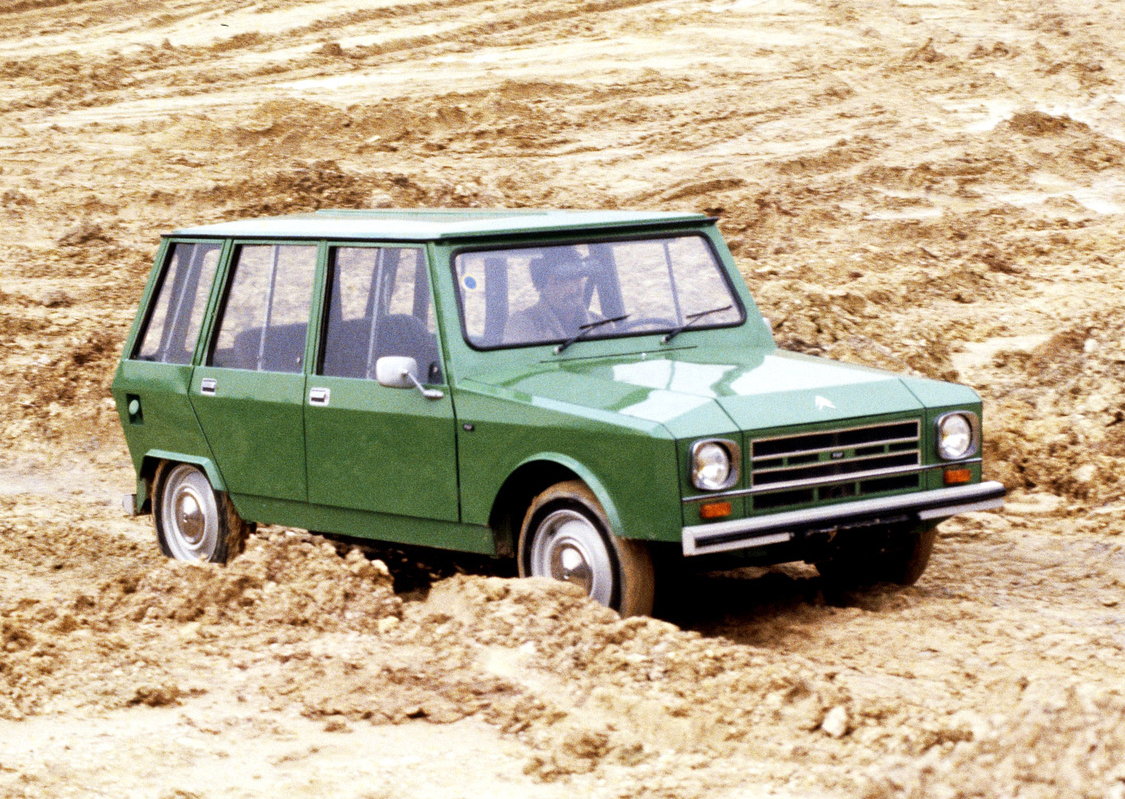The Citroën 2CV (or “deux chevaux” i.e. “deux chevaux-vapeur [fiscaux]”, literally “two tax horsepower”) is considered one of Citroën’s most iconic cars. It was designed as an economy vehicle with uncompromisingly utilitarian unconventional looks. Originating with the Toute Petite Voiture project of 1936 under the visionary vice-president Pierre Boulanger, Citroën had certain guidelines for the car: it should carry two people, 50 kg of potatoes and a small barrel of wine, and use no more than 3 ℓ of fuel per 100 km. It should also be able to drive across a ploughed field without breaking a tray of eggs. Boulanger insisted that he be able to wear his hat inside the car, so the roofline was designed to accommodate it.
In 1937, the first prototype emerged, with a single headlight and weighing 370 kg, able to carry four people, 50 kg of luggage, and achieve a maximum speed of 50 km/h. Although 250 of these prototypes were built prior to the 1939 Paris Auto Show, the war intervened and all but four of them were scrapped to avoid having them fall into German hands.
The 2CV was eventually introduced in 1947 and reached production in 1949 although only 924 were built that year with a 50 km/h top speed, and a 375 cc air-cooled, flat-twin cylinder engine developing 9 hp. Both urban and rural buyers favoured the car, especially with its cheap price, bringing mobility to the masses. Orders began coming in, to a point in 1950 where the delivery time was many years (Citroën claims six). Since then, some seven million 2CVs and 2CV variations have been produced with production ending in 1990.
The first 2CVs, designated ‘A’ series, had a 375cc 2 cylinder engine and were rated at two horsepower on the French fiscal rating (hence its name 2CV or ‘two horses’). It had such features as a canvas roof, running from the windshield to the rear bumper (forming the trunklid as well as the roof) and just two instruments: a speedometer and an ammeter. It was available in only one color, an aluminum grey. Over the years. the 2CV slowly evolved to its present-day form. In 1954 it got the 425cc 12 hp engine, in 1957 the metal trunk lid, in 1959 it offered a wider range of body colors, and received a third side window in 1965. Early models featured a “ripple bonnet” hood (up until 1961) and reverse opening front doors (until 1963). Power increased over the years to 425 cc 12hp, then 435 cc 18hp and finally a 602 cc version that delivered a whopping 29hp!
The 2CV was technologically advanced and innovative, with engineering such as front-wheel-drive and a front-to-rear compressed spring interconnected suspension system that gave it an incredible “floating” ride.
When the 2CV gained its largest 602 cc engine. It even went on Raids: the 16,500 km Paris–Kabul–Paris in 1970, the 13,500 km Paris–Persépolis in 1971, and the 8,000 km Africa Raid from Abidjan to Tunis in 1973.
Commencing in the 1970’s Citroën offered decorative models of various themes. Ten special editions were launched in France and other European countries:
France:
• 1976: 2CV Spot
• 1980: 2CV Charleston
• 1981: 2CV 007 James Bond
• 1983 and 1984: 2CV France 3
• 1985 and 1986: 2CV Dolly
• 1986: 2CV Cocorico
Spain:
• 1982: 2CV Marcatelo
Germany & Switzerland:
• 1985: 2CV Ente Grün
England:
• 1987: 2CV Bamboo
Belgium:
• 1988: 2CV Perrier
The best known of these special edition models is the 2CV Charleston. Citroën produced 8,000 of them in 1980 with burgundy and black body paint (and swooping decals applied to the doors), special diamond-patterned grey seat upholstery and retaining the iconic round headlights from the 2CV Spécial model at the time.
Though Charlestons were initially released with a burgundy and black finish, by July 1982 Citroën added a yellow and black variant. By July 1983, the yellow and black Charleston was replaced with a version that had two shades of grey.
The very last 2CV rolled off the production line on July 27, 1990 at precisely 4 pm not in Levallois, France, where production had ended in 1988 but in Mangualde, Portugal, where the 2CV line continued to produce cars until that day. The Mangualde models are easily identifiable by their windows as they sport the name of their Spanish glazier, “Covina.”
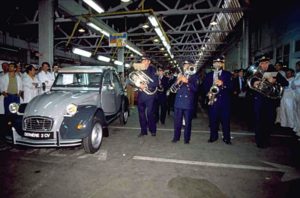 The last 2CV manufactured in Mangualde, Portugal.
The last 2CV manufactured in Mangualde, Portugal.
Van versions of the 2CV (often referred to as “Truckette” or “Forugonnette”) were also produced
As was a 4-wheel drive model called the Sahara (produced from 1960 to 1971) with two engines and gearboxes; – one in the front and one in the rear.
Since its debut in 1948, a total of 5,114,959 2CVs were produced worldwide (including 1,246,335 vans) and the last car built resides with an enthusiast in the Alsace region of France.
There was also a plastic bodied model known as the Méhari. (We have a separate gallery for it.)
The Citroën Dyane, based on the 2CV’s suspension and mechanicals, was introduced in to be an upscale economy car. (We have a separate gallery for it.)
The Citroën Bijou was a small fiberglass bodied couple also based on 2CV’s suspension and mechanicals that was manufactured in Citroen’s plant at Slough in England. (We have a separate gallery for it.)
Chile and Argentina had the Citroneta, a saloon with a pick-up rear end.
Chile then had the AX-330 and budget-priced AX-300, a hatchback 2CV.
Argentina débuted the 602 cc engine before the French, in 1969, with its 3CV (a more accurate name given the larger engine). The 3CV’s successor was made by IES, which was modernized through the 1980s, ultimately with the Súper América in 1987 featuring a larger windscreen, front disc brakes and electronic ignition.
Also in Argentina, the Gringo, made by IES, was developed from Gringa commercial vehicles. It had a plastic (GRP) body from Uruguay, all-wheel drive and 635 cc engine.
Developing countries saw the FAF, a 2CV-based utilitarian vehicle with estate, convertible, pick-up and van bodies.
Here is a timeline of the 2CV and the main 2CV derivatives:
The Van (also referred to as “Truckette” or “Forugonnette”) remained in production until March 1978. In total, 1,246,335 Vans were produced.
The Ami 6 was a re-bodied 2CV to cater to the traditional sedan market. It had very distinctive body lines and a larger engine (602 cc) than the 1950s 2CV, to compensate for the added body weight. The Ami 6 also featured a distinctive reverse-raked notchback rear window. (The Ami was offered in sedan and break (estate) body styles over two generations; the Ami 6 and the Ami 8. And the Ami Super was powered by the 4-cylinder engine of the GS and produced between 1973 and 1976).
A year after the Dyane, the first Méhari was being produced. A versatile off-road vehicle with a rust-free body made of ABS plastic.
The Acadiane was the successor of the 2CV Van. It was a compact utility van based on the Citroën Dyane.
